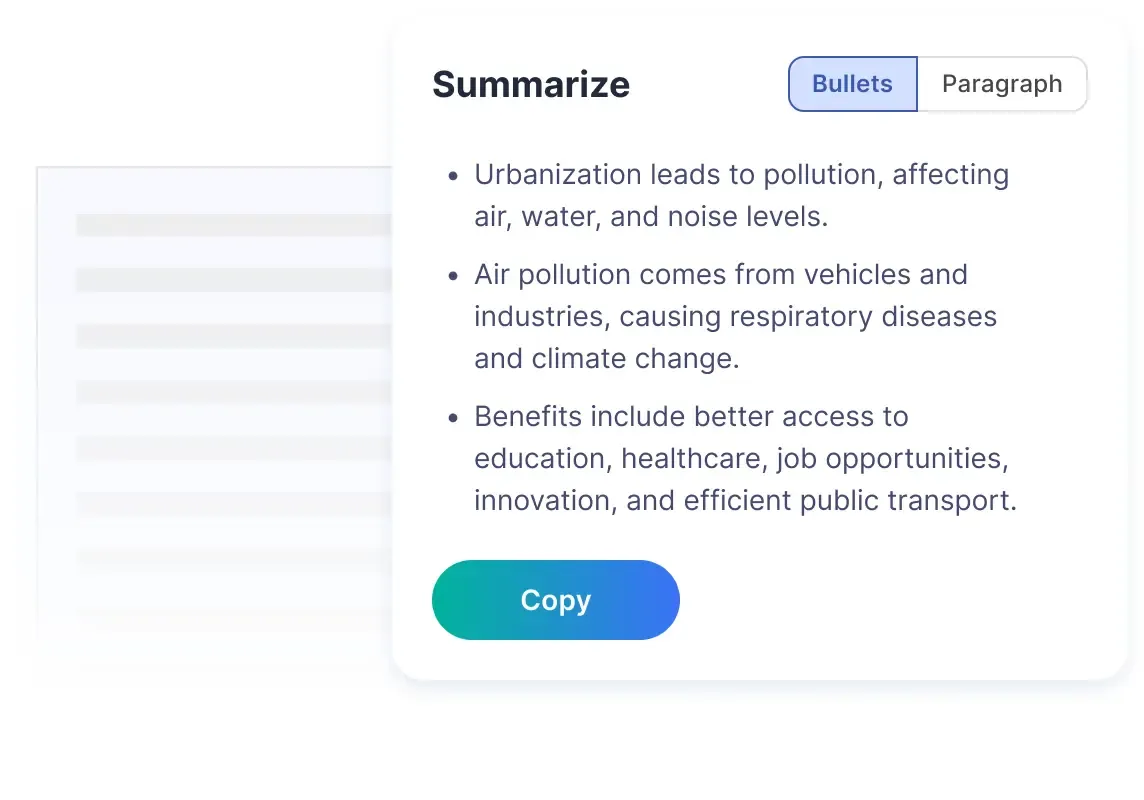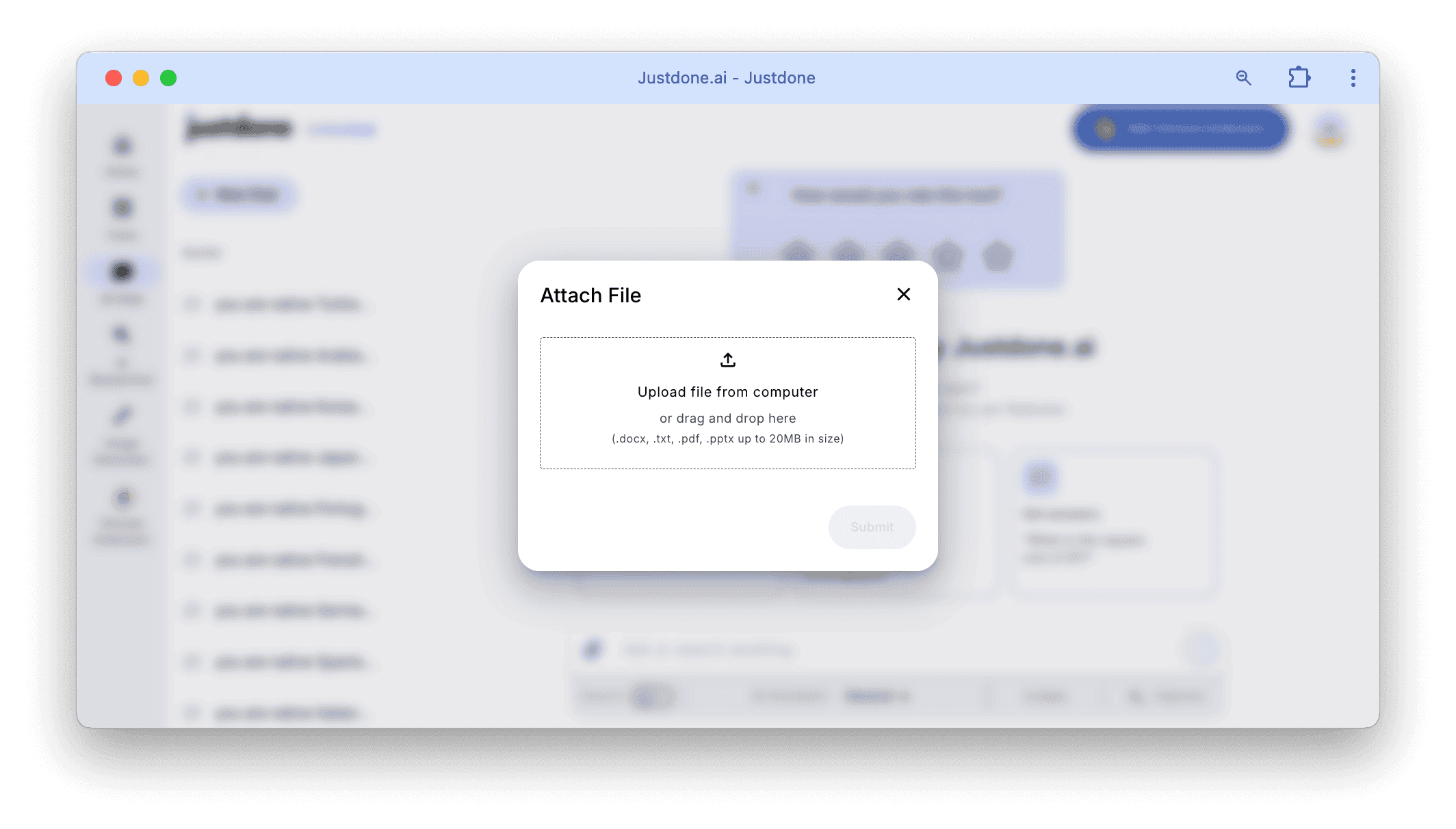As an academic coach, I’ve worked with a lot of students and professionals who struggle with one common task - summarizing articles. Whether it’s for an assignment, research, or content creation, turning a long article into something short and sharp can feel overwhelming. But it doesn’t have to be. In this guide, I’ll walk you through why summarizing matters, what common challenges people run into, and exactly how you can do it well. I’ll also show you how AI-powered summarizing tools can make the process smoother and faster. Let’s simplify the art of summarizing.
What’s an Article Summary?
A summary of an article is just a clear, shortened version of the original. It picks out the main ideas, key arguments, and final takeaways without repeating all the details. You’re not rewriting the whole thing; you’re boiling it down to what matters most.
When I first started writing, I noticed that summarizing wasn’t just about saving time; it actually helped me understand what I was reading better. Getting to the point forces you to really engage with the material.
So, why article summary matters: It simply helps you explain complex material quickly.
Where you’ll use it: Think about book reviews, meeting notes, blog intros, social media, or exam prep.
Quick tip: When a long read feels too much, JustDone’s summarization tool highlights the core message fast, saving you time and brainpower.

When It Makes Sense to Summarize
There are some clear moments when writing a summary really pays off. Here are a few that come to my mind first:
- Classwork: Breaking down research papers or textbook chapters for essays or group projects.
- Work tasks: Turning updates or long reports into quick briefings for your team or manager.
- Creating content: Writing teasers or previews for blog posts or newsletters.
- Studying: Condensing material into quick-reference notes before a test.
Personally, I’ve found that creating summaries before meetings helps me sound clearer and stay focused. If you’re short on time, the AI tools in JustDone are super helpful. You paste your text in, and it gives you a tight summary you can refine if needed.
How to Summarize an Article Step-by-Step
It’s not as hard as it seems. Breaking it into small steps helps a lot:
- Read the full piece: You need the full picture before you condense anything.
- Find the key parts: Pick out the thesis, big points, and major evidence.
- Write a draft: In your own words, explain the main ideas simply and clearly.
- Double-check: Look back at the original—did you miss anything important?
- Tighten it up: Cut extra words, smooth out the language, and make sure it flows.
The first time I summarized a technical report, I struggled to stay focused. These steps kept me on track. Then, I used to apply JustDone’s summarizer as a first pass when I’m on a tight schedule. It also helps when I need to get a solid draft. The only thing left is to tweak the language so it sounds like you.
Best Practices for Clear Article Summary
Even when you know how to write a summary of an article, it’s easy to fall into traps. These tips keep things tight and useful:
- Stick to facts: Don’t insert your own opinion—this isn’t an editorial.
- Use fresh wording: Don’t copy; rewrite in a way that shows you understand.
- Be brief: Keep only the essentials. No fluff.
- Stay organized: Follow the original flow or choose a structure that makes ideas easier to follow.
- Be accurate: Double-check names, numbers, and facts.
One thing that helped me early on was using simple comparison tables. For example:
| Original Article Point | Summary |
|---|---|
| The research identifies three main causes of climate change: fossil fuel use, deforestation, and agriculture. | Climate change is primarily driven by fossil fuels, deforestation, and agriculture. |
Real Examples to Learn From
Seeing real-life summaries can help you get the hang of it. Here are two article summary examples: one for a news article, and another for a research paper:
Example 1: News Article
Full:
The city passed a plan to cut carbon emissions by 40% over ten years, focusing on solar, wind, and public transport.
Summary:
The city approved a plan to cut emissions by 40% in ten years using clean energy and transit.
Example 2: Research Study
Full:
Researchers studied 2,000 people and found that regular exercise reduces the risk of heart disease. They suggest 150 minutes of activity a week.
Summary:
A Study says 150 minutes of weekly exercise lowers heart disease risk.
I like comparing my own summaries to what AI assistants produce. Sometimes the tool nails the phrasing, other times I add more nuance. Anyway, it’s a great way to double-check your work or fill in any gaps.
Using AI Tools to Make Summarization Easier
AI tools have changed the game when it comes to summarizing. JustDone offers over 25 helpful tools that go beyond just basic rewording. Their AI Research Tool, for example, can analyze long-form content like papers or PDFs and pull out the most relevant parts in seconds.
Here’s what makes these tools so useful:
- Fast first drafts: Skip the first read-through and get to the main points instantly.
- Multiple formats: Handle websites, documents, even audio or video transcriptions.
- Reliable summaries: Reduce the chance of missing something key.
- Custom results: You can pick a summary length or the angle you want to focus on.
I once used JustDone’s Research Tool to summarize a white paper that would’ve taken me two hours to read. Instead, I got a solid outline in minutes and used that as a base to write a report. It’s a smart combo: use AI for speed, then add your own voice.

Common Mistakes (and How to Dodge Them)
Here are a few slip-ups I’ve seen over and over, some of which I made myself when starting out:
- Too much info: If your summary is nearly as long as the original, it’s not really a summary.
- Copying sentences: Avoid direct lifting—it can lead to plagiarism.
- Oversimplifying: Don’t lose meaning just to save words.
- Disorganized flow: Jumping around makes your summary confusing. Keep it structured.
I used to include every detail because I didn’t want to “miss something.” But readers don’t want everything - they want what matters most. That mindset shift made my writing sharper.
My Tips for Better Article Summaries
Summarizing isn’t just mechanical; it’s a thinking tool. It trains you to figure out what’s most important. Here’s what I suggest:
- Mark it up: Highlight as you read, either physically or digitally.
- Talk it out: Try explaining the article out loud to someone else.
- Use a structure: Try a simple format: Topic, Argument, Key Evidence, Conclusion.
- Check your version against AI: Let JustDone give you a second take, then improve on it.
These habits have made me quicker and more confident, not just in writing, but in understanding. I’ve even had colleagues tell me they rely on my summaries more than the originals. That’s a pretty great compliment.
Wrapping It Up: Make Summarizing Work for You
Learning to write a summary of an article pays off across the board—whether you’re in school, building your career, or creating content. When you follow a solid process, avoid common mistakes, and take advantage of smart tools like JustDone, it becomes a skill you can count on.
The best part? You don’t need to memorize anything. Just come back to this guide, follow the steps, and build your own method that works. Summarizing doesn’t have to be a struggle. With a bit of practice—and the right tools—you can tackle even the longest articles with ease.